Stonehenge with Francis Pryor
This is my third post on a recently completed trip to Britain with Canadian military history specialists, Liberation Tours. Titled Medieval Britain: Castles, Cannons and Crowns, the tour took us from London to Edinburgh with stops at an incredible variety of well known and lesser visited sites dating from 2500 B.C.E. to the Battle of Trafalgar in 1805. My first two posts featured the Battle of Hastings and HMS Victory at Portsmouth Naval Yard. Those tours were led by our tour leader and historian Phil Craig who always does a great job, using his skills as a professional actor to inject more than just a perfunctory run through of ‘the facts’ that you often get on some tours. However, this morning we are in for something truly special as we tour the most famous neolithic monument in the world, Stonehenge with one of Britain’s foremost archaeologists – Francis Pryor M.B.E.. Won’t you join us for Francis’ take on the builders of Stonehenge, its meaning and significance and what he thinks of the druids?
Francis Pryor
Phil had promised us a surprise guest as we motored towards Stonehenge from Portsmouth and as we pulled into Salisbury there was a bewhiskered gentleman waiting for us at a bus stop. He hopped aboard and Phil introduced us to one of the most famous archaeologists in Britain. Author of over a dozen books on ancient Britain including one specifically on Stonehenge, Francis Pryor has lived the life that every aspiring pre-historian dreams of. Discoverer of Flag Fen, one of the most important Bronze Age sites in Britain he has gone on to relative fame as a frequent contributor to the archaeological television series Time Team, which ran for twenty years on British TV. In Britain, where interest in history and archaeology far surpasses anything comparable in North America, people like Francis are celebrities, but definitely not of the fake Kardashian type. He has lived a life of accomplishment, without any of it going to his head. Read the posts on his website and you’ll understand why it was an honour to meet this storied archaeologist and have him guide us through this magical site called Stonehenge.
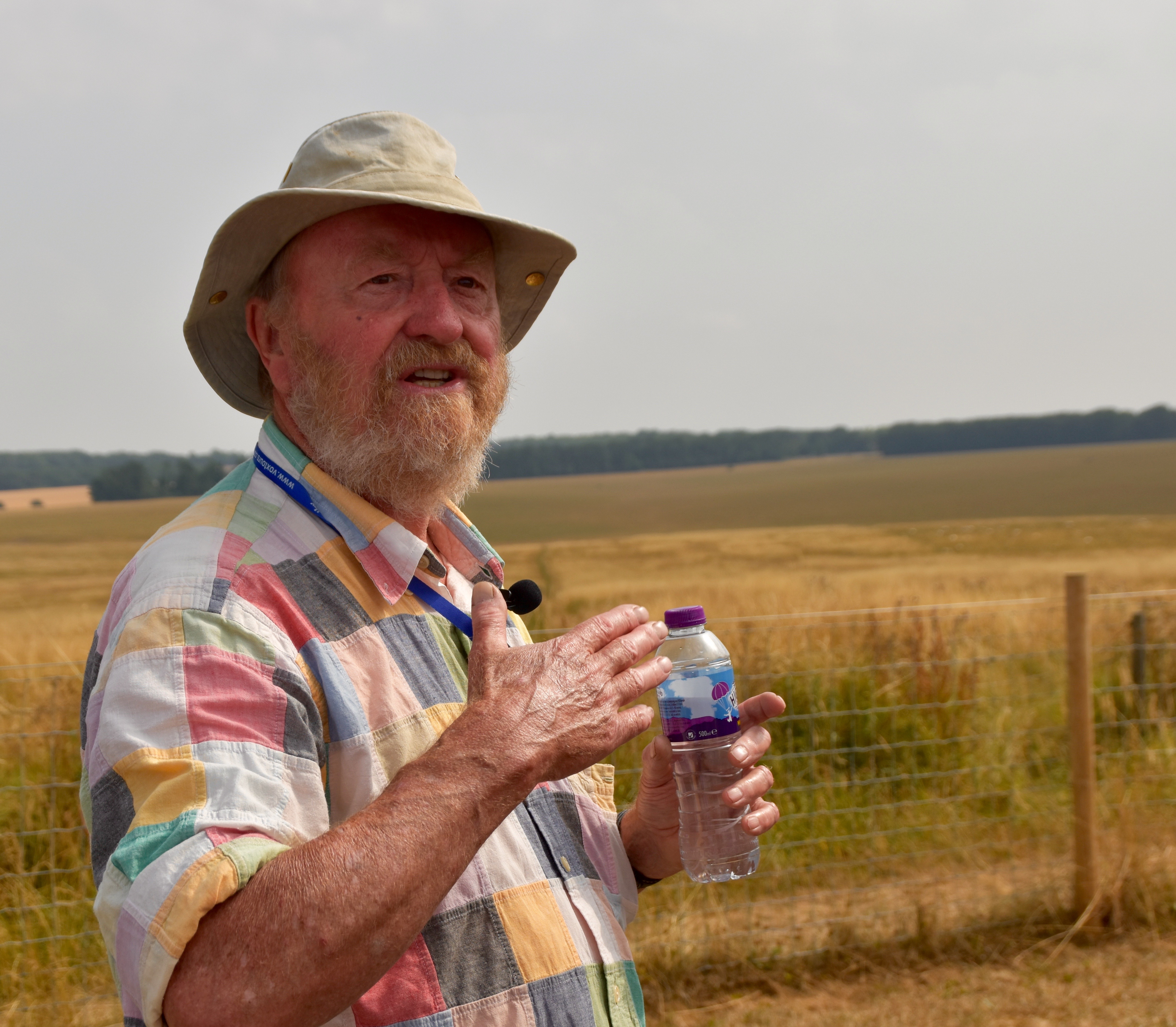
About Stonehenge
I doubt that there’s anybody who wasn’t born under a cabbage leaf who has not heard of Stonehenge. However, simply describing it is not easy so I’ll bail on that and instead substitute this description from the UNESCO World Heritage Site designation of Outstanding Universal Value:
The World Heritage property Stonehenge, Avebury and Associated Sites is internationally important for its complexes of outstanding prehistoric monuments. Stonehenge is the most architecturally sophisticated prehistoric stone circle in the world, while Avebury is the largest. Together with inter-related monuments, and their associated landscapes, they demonstrate Neolithic and Bronze Age ceremonial and mortuary practices resulting from around 2000 years of continuous use and monument building between circa 3700 and 1600 BC. As such they represent a unique embodiment of our collective heritage.
Okay, that’s the description, but why does this bunch of stones hold such fascination for mankind? I’ll try to at least attempt to answer some of the reason for Stonehenge’s mystique as we tour the site with Francis, but first we have to get there.
Visiting Stonehenge
This will be my third visit to Stonehenge. The first was as a lad of twelve when I accompanied my grandparents to what was then a relatively deserted site that we could walk about freely. There is a picture me standing between two of the uprights which I dearly wish I could find. Today of course you cannot go up to the stones and must observe them from a distance.
My second visit was with Alison about a dozen years ago on Halloween of all days. At that time you approached the site through a pedestrian tunnel that ran from the visitors centre to the stones. Now that has all been replaced by an entirely new visitor centre almost a mile from Stonehenge itself, which is all part of the plan to not only preserve Stonehenge, but all of the surrounding lands which are pivotal to understanding the significance of the place.
Stonehenge is administered by the not-for-profit English Heritage Trust and it has done a fabulous job of keeping both the monument and the surrounding landscape completely uncommercialized. The rolling chalk hills of Wiltshire are not blighted by billboards, souvenir shops or other unnecessary distractions. Instead you can clearly see the many barrows or ancient burial mounds that dot the farmer’s fields around Stonehenge. This greatly adds to the sense of mystery and timelessness that surrounds the entire area.
Now comes the challenging part for the keepers of Stonehenge – how do you make the experience worthwhile for visitors when their sheer numbers seem to make that impossible. The number of people visiting Stonehenge has skyrocketed over the last decade. In 2017 1,582,500 people visited Stonehenge. That’s an average of over 4,300 people a day, but realistically you are going to see upwards of 10,000 a day in the summer months. Put in perspective, that’s about 200 busloads of visitors every day and as we approach the coach parking lot it looks like we’re well on the way to getting those numbers this morning. Is this visit going to turn into a nightmare of people pushing and shoving to get a better shot or God forbid a loathsome selfie?
Thankfully the answer is no, and here’s why.
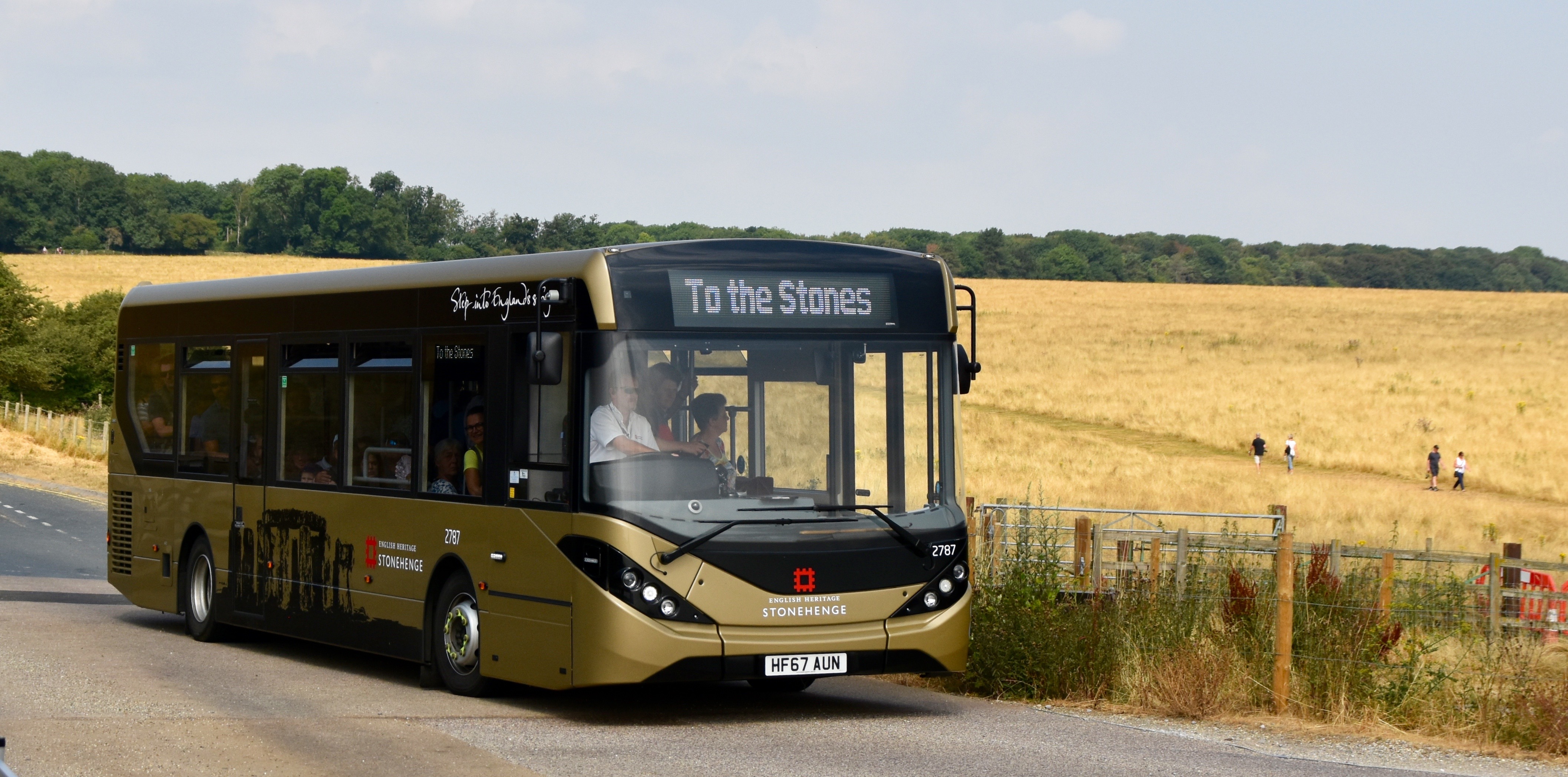
From the parking lot there are only two ways to get to Stonehenge – walk, which you can see people doing in the photo above or, as the vast majority of visitors do, take this bus. No it isn’t going to a Rolling Stones concert, but something far more lasting. Because the buses only depart once they are full, this means that even at the busiest of times, only about a hundred or maybe two hundred people will be on site at one time. Usually as many are leaving as are arriving at the same time. The site is more than large enough to absorb this many visitors as once without being overwhelmed, so don’t worry you will be able to get great shots of Stonehenge without a horde of other people in the way. Here’s the proof.
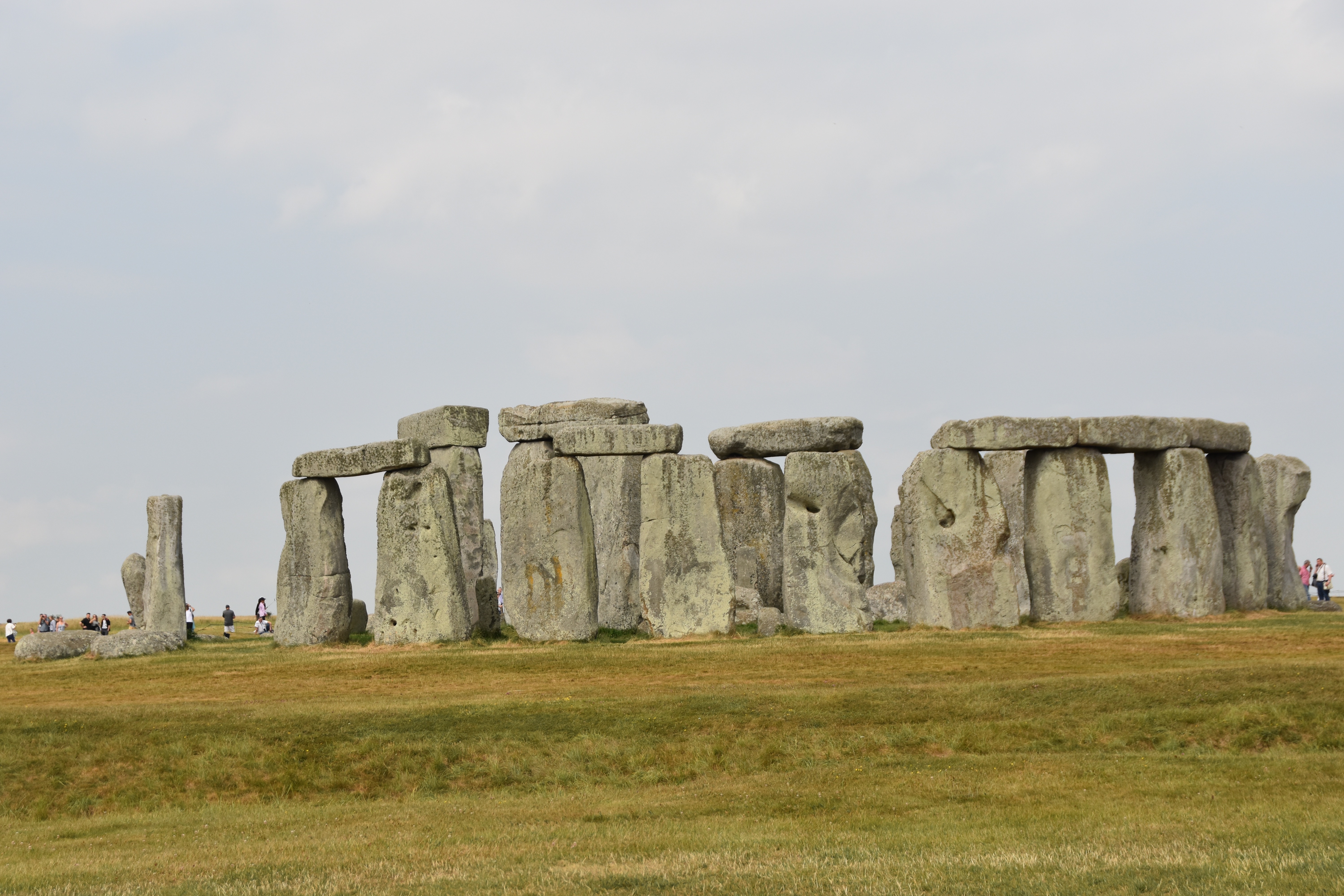
As we gather round the Welcome Sign we plug in our own audio sets which Liberation Tours uses so that everyone doesn’t need to crowd around the speaker, in this case, Francis Pryor. In fact, you can be up to 100 feet away and still here him clearly. We didn’t use the audio sets much on this tour, but nowhere did they come in more useful than at Stonehenge.

Before heading directly to the site Francis asks us to gaze around at the countryside as he points out not only the barrows, but numerous other features that one wouldn’t appreciate were associated with Stonehenge, such as the site of postholes that date back an incredible 10,000 years. That’s over 5,000 years before the Stonehenge circle was created. It quickly becomes apparent that we are standing on a huge patchwork of monuments that spans millenia and to this day, eludes definitive interpretation.
Francis then leads us to the stone circle and points out the remnants of a ditch that actually pre-dates the construction of the stone circle we call Stonehenge.
You can see it very clearly from this aerial photograph.
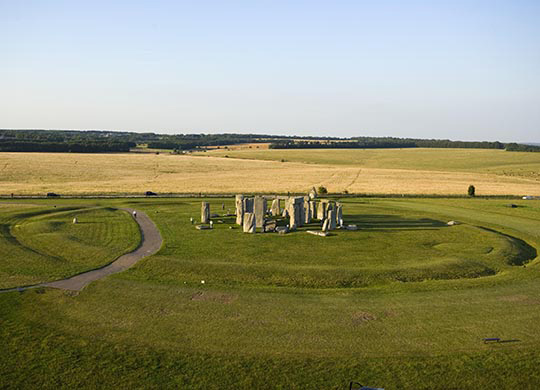
We then take a leisurely stroll around Stonehenge which simply begs to be photographed from every angle. This is my favourite because I can see the narrow space between the stones that I stood in over fifty years ago. Long, long after my body has returned to the Biblical dust to dust, these stones will stand on this eternal plain, a reminder to all of the impermanence of one man, but the permanency of mankind’s ancient monuments.
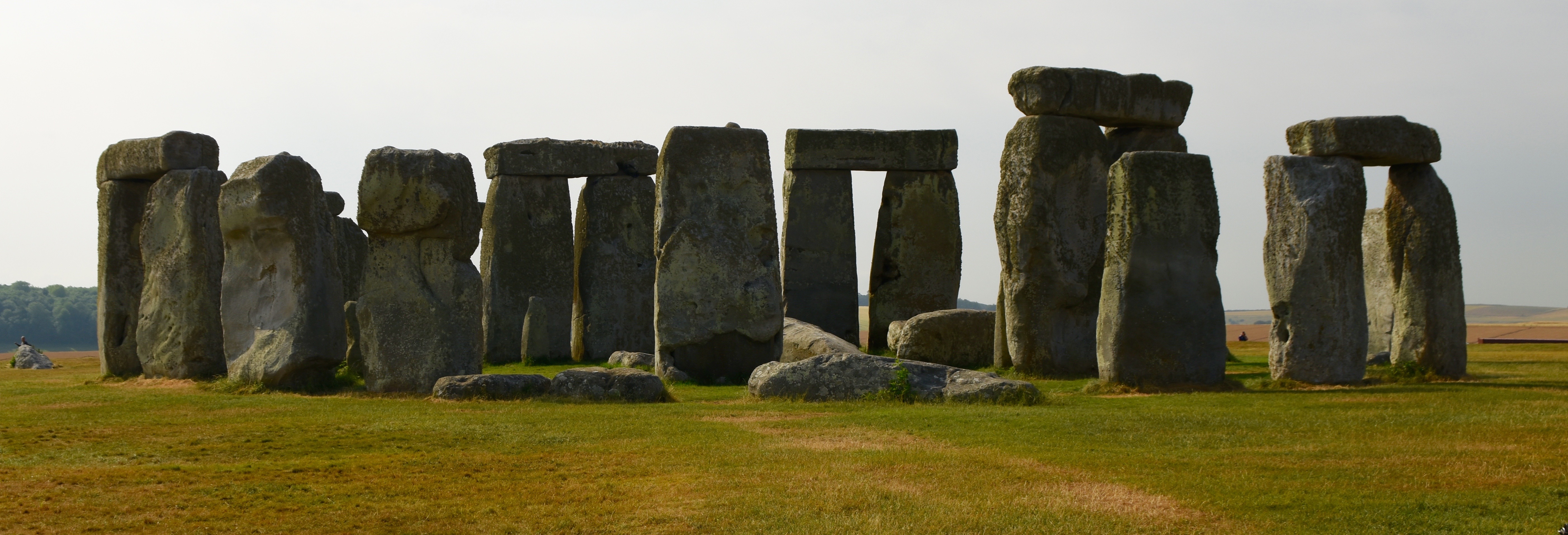
Unlike the pyramids, Stonehenge was not built in one fell swoop over a few years or decades, but rather gradually over hundreds of years beginning from roughly about 2500 BC. As we make the tour Francis gives us details on the many theories surrounding the meaning and purpose of Stonehenge. At some points the rope barrier let’s one get quite close to the stones.
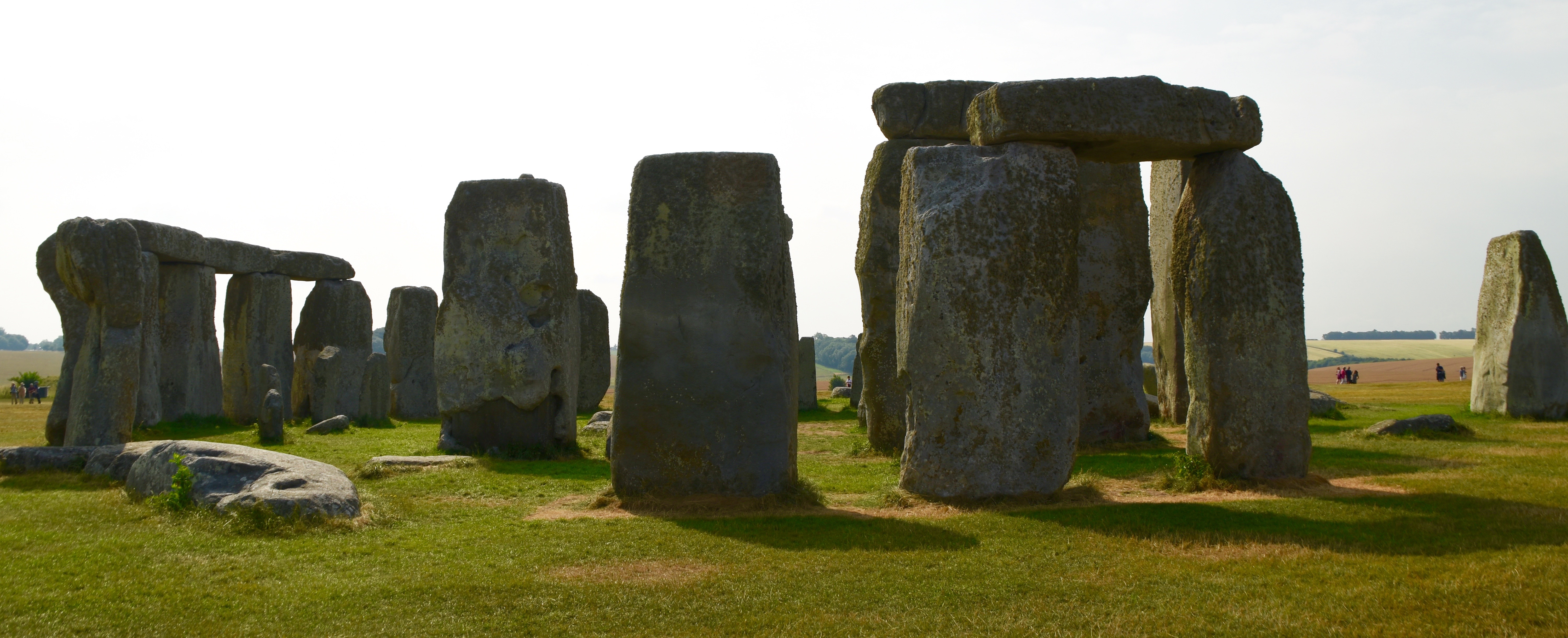
Finally we arrive at the heel stone,
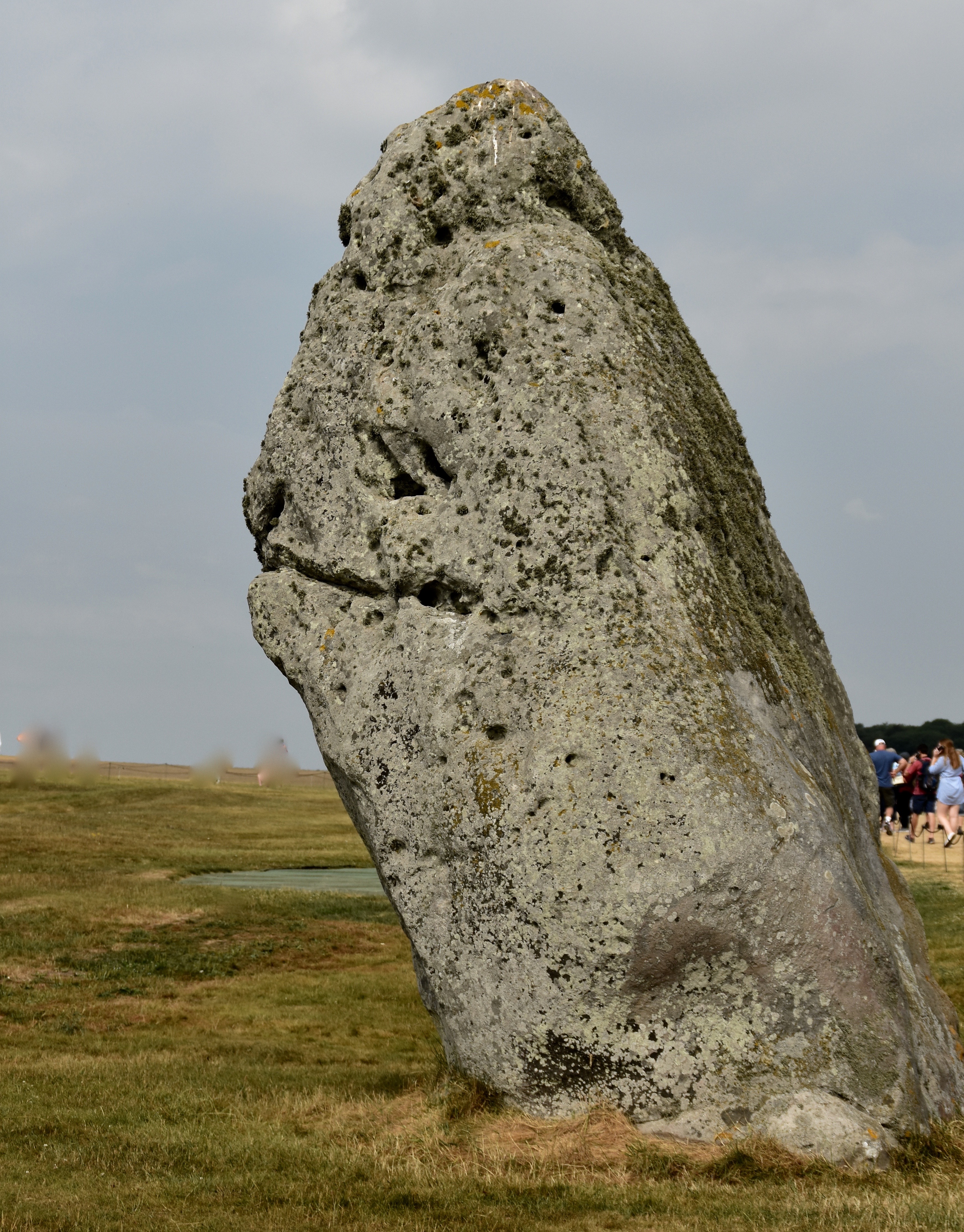
Here Francis shows us where the sunrise on the longest and sunset on the shortest days of the year sends a beam of light through the trilithons in a manner that archaeologists have long known to be intentional on the part of the builders. This is one of the things that has long fascinated people about Stonehenge.
This is what you would see if you were here at the summer solstice, assuming you could see anything because you’ll be there with up to 90,000 other people..
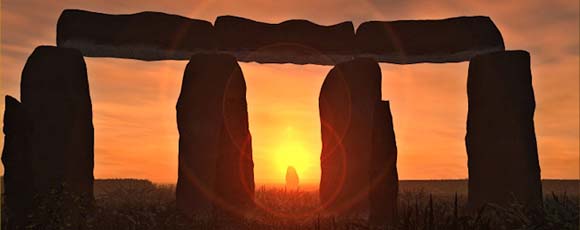
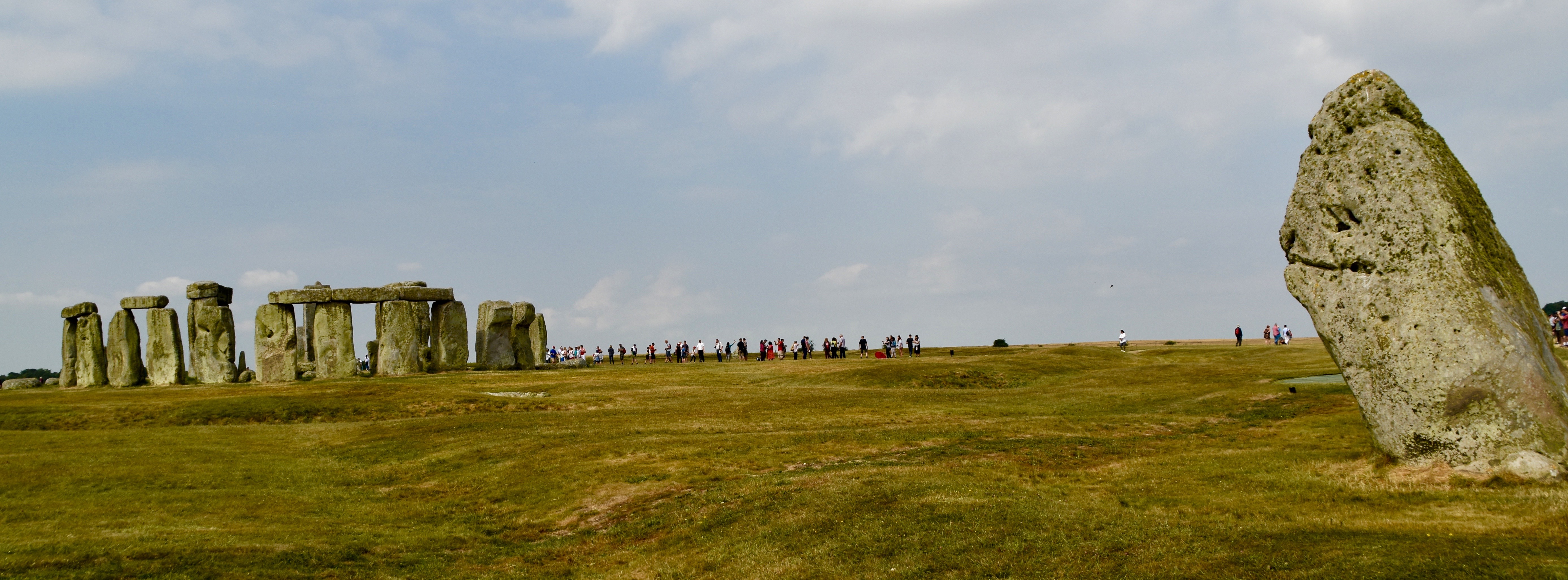
Who the people were who actually built Stonehenge has been the subject of debate for over a thousand years. According to Geoffrey of Monmouth it was Merlin the magician and this was actually believed by many up until the 1500’s. At another point the druids, whoever they really were, obtained favour, but Francis dismisses that notion as suitable only for bad historical novels and delusional new agers. The only thing we know for certain is that it was an important neolithic site for thousands of years and the more archaeological work done by people like Francis Pryor, the more we will learn.
What will never change, no matter what we learn, is the magical allure of Stonehenge that will continue to draw people from around the world to feel it and draw people like me back here again and again.
Before heading back to the bus we take this group photo of a happy bunch who can now cross Stonehenge off their bucket lists.
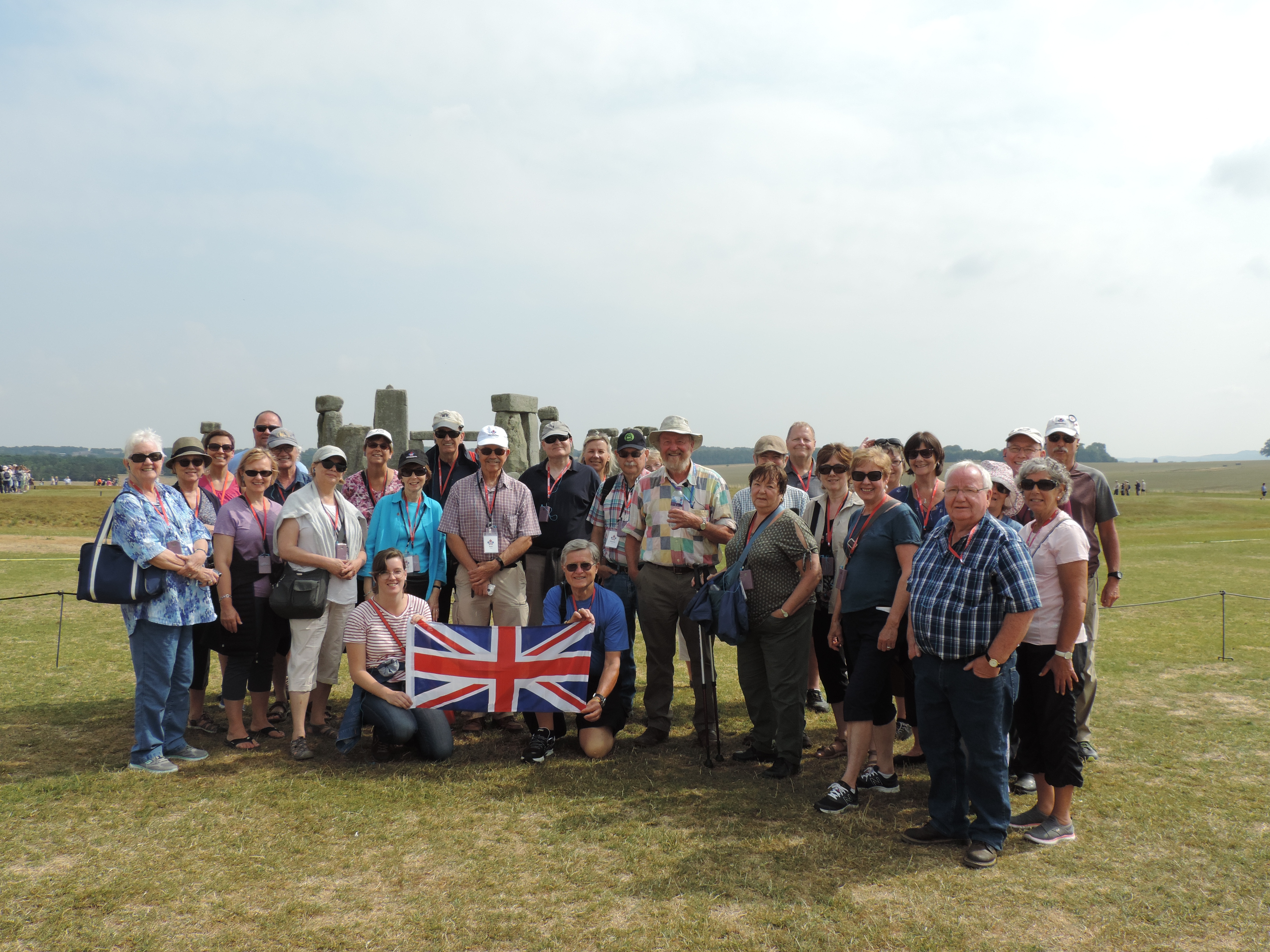
We drop Francis and Phil off in Salisbury where they will raise a pint or two while the rest of us head to Salisbury cathedral which will be the topic of my next post. Thank you Liberation Tours for introducing me to this most humble, interesting and quintessentially English gentleman (and I’m not talking about you Phil.)

